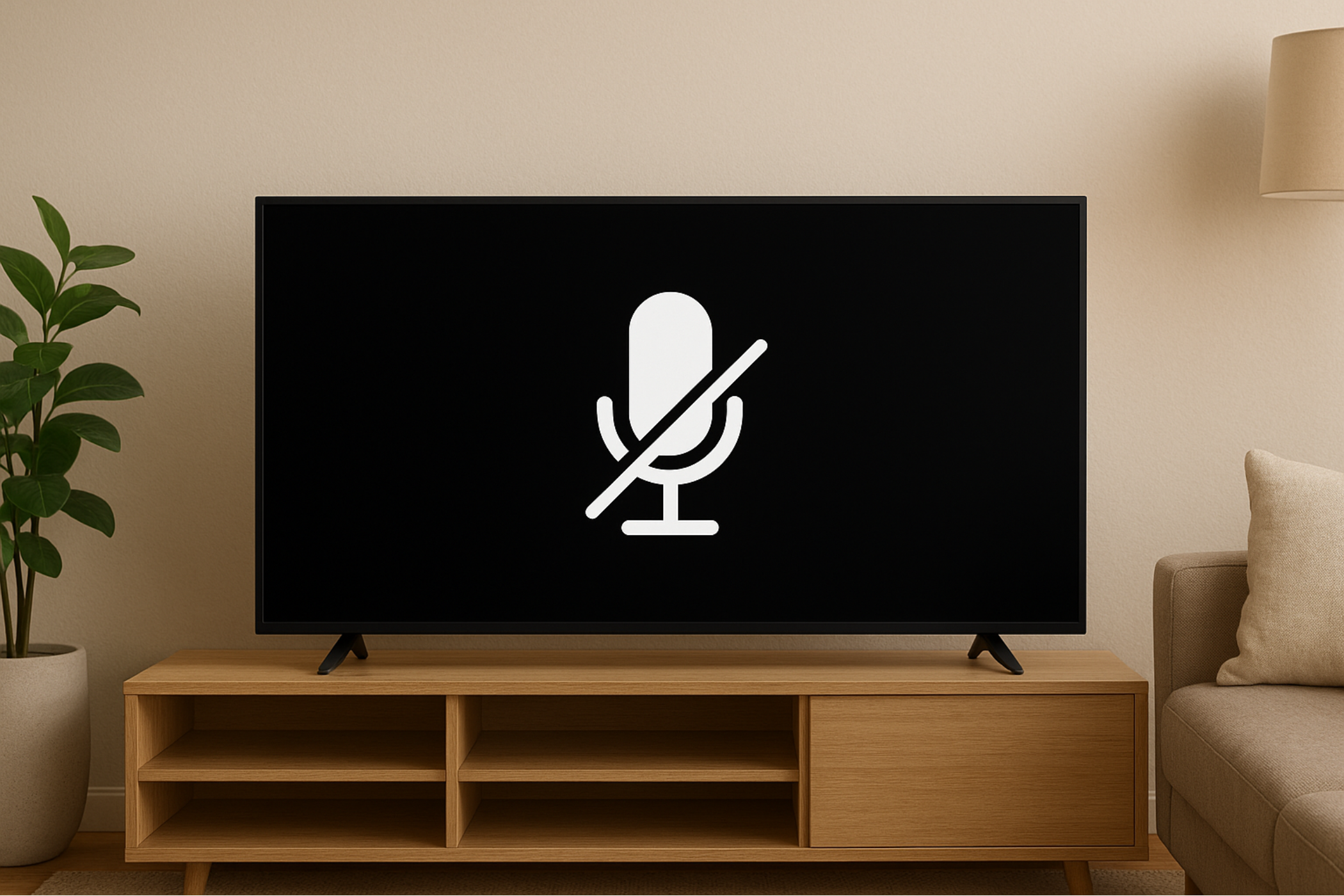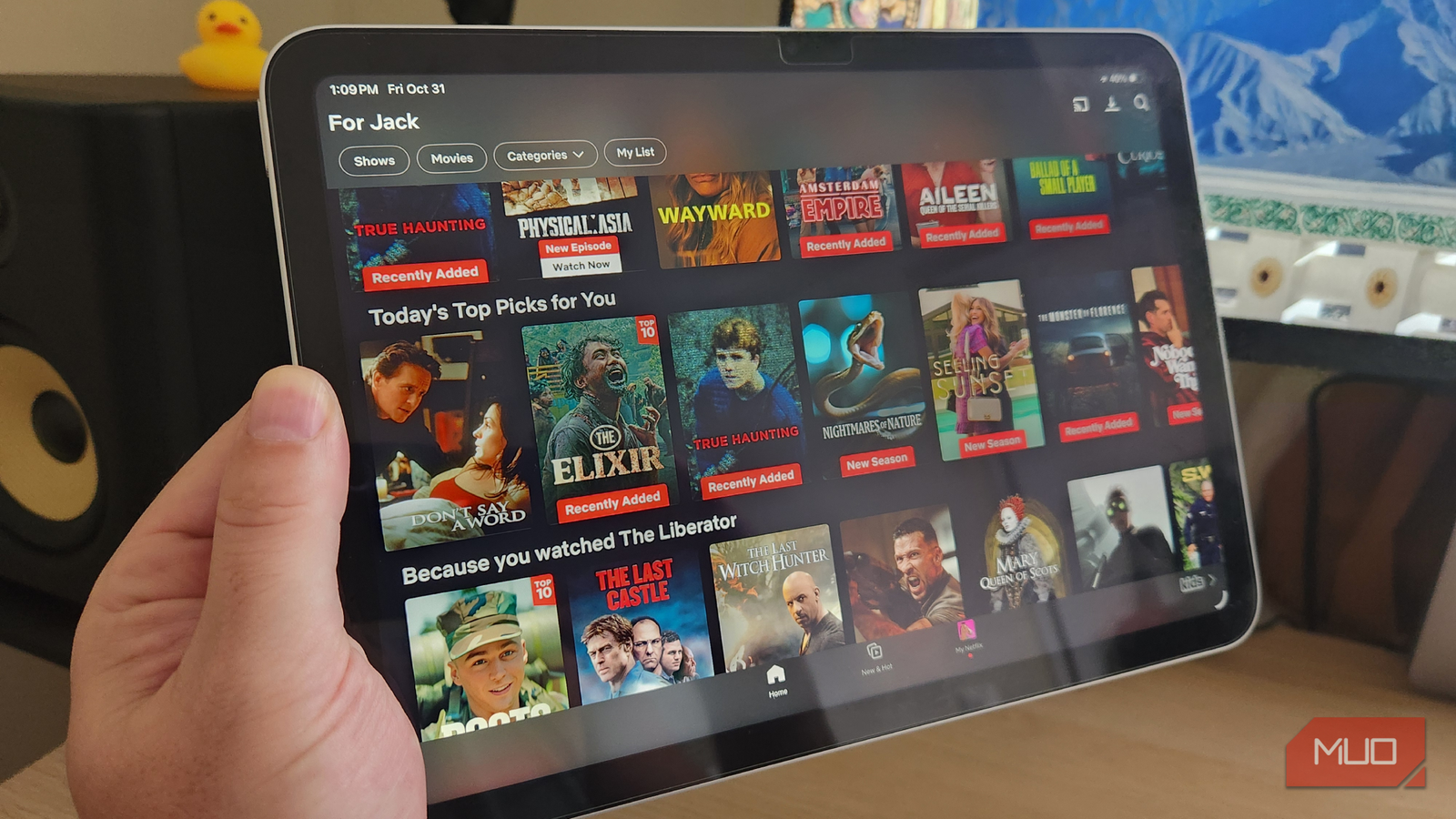While browsing my TV’s settings, I realized its microphone was always listening even when I wasn’t talking to it. That didn’t sit right with me, so I switched it off and didn’t look back.
Why Smart TVs Have Always-Listening Mics
Smart TVs today are built with microphones that are always listening for voice commands. That makes it convenient. You can say what you want and, voilà, the TV responds. You don’t need to hunt for the remote or type into clunky on-screen keyboards. Whether it’s opening an app or searching for something to watch, built-in voice assistants make hands-free TV use possible.
Some TV models even integrate with smart home ecosystems like Amazon Alexa and Google Home, thus acting as a central hub for controlling lights, thermostats, and other devices. It’s handy, but in exchange for the convenience, your TV’s microphone has to always be on standby, constantly listening for a wake word. If you love hands-free control, you’ll definitely appreciate having your TV’s mic on standby. But for me, it was different.
Why I Disabled My Smart TV’s Always-On Mic
At first, I didn’t think much about my TV’s always-on microphone—it was just another feature built in for convenience. But the more I thought about it, the less comfortable I became. Eventually, I decided to turn it off, and my decision came down to three crucial reasons.
1. Privacy Concerns
One of the biggest reasons I decided to turn off my smart TV’s microphone is privacy. I don’t like the idea of being listened to all the time. Sure, these microphones are designed only to record when you say the wake words, like “Hey Google,” but to make that work, they have to always be active in the background. If the mic isn’t active in the background, it wouldn’t detect those wake phrases.
That means conversations at home are always picked up, just not acted upon unless you say the wake word. Even if manufacturers insist that they only record snippets of our interactions with these voice assistants after hearing the wake word, the reality is that, as users, we don’t have complete visibility into what’s actually being captured. Besides, the audio recordings captured with your smart TV are typically sent back to the manufacturer or a third party to process your commands and fulfill your requests.
People may even review these recordings to help improve speech recognition algorithms. That’s a level of exposure I wasn’t comfortable with. My living room is where I relax, chat with family, and talk freely. The thought of parts of those conversations being captured—even unintentionally—felt like too much of an intrusion.
2. I Rarely Use Voice Commands
Another significant factor in my decision was realizing how little I actually used voice commands. When I first heard of voice assistants in the early 2010s, I thought the idea of controlling devices by voice sounded futuristic and convenient. But in reality, after giving it a try on my phone and smart TV, it just never grew on me.
My current Google TV-powered TCL smart TV has two ways to wake the voice assistant (using a dedicated Google Assistant button or by the “Hey Google” wake word). Yet I always reach for the remote when I need something as simple as opening an app or adjusting the volume. And unlike the remote, the microphone didn’t always get things right for the few times that I tried to use it. Sometimes I had to repeat myself or deal with misheard requests, which made the feature more frustrating than helpful.
Besides, since my TV is quite far from where I sit, I always feel like I have to shout to control the TV using voice commands. That made me question why I was keeping such a privacy- and security-sensitive feature switched on if it wasn’t truly benefiting me. As such, disabling the TV’s mic felt like a no-brainer.
3. Risks of Hacking or Misuse
The last piece of the puzzle was security. In case you didn’t already know, any device that connects to the internet is vulnerable to hacking. The simple act of connecting your TV to the internet opens the door to different risks. Although smart TVs aren’t the most common targets for bad actors, they’re not totally out of the equation.
After all, they’re still computers at their core, running software that can have flaws that hackers could exploit to bypass security features. And it’s not just software flaws. Hackers can take control of your TV in different ways. The idea of someone gaining unauthorized access to my TV’s mic was unsettling. It’s also why you should keep your smart TV’s camera always covered, because you never know.
Additionally, there’s also a risk of misuse by the manufacturer itself, either collecting more data than specified or using the recorded voice data in ways users didn’t agree to, like serving personalized ads. To me, the small convenience of voice commands simply wasn’t worth the larger gamble of leaving my home open to potential eavesdropping.
How I Turned Off My TV’s Mic
With all that in mind, I decided to turn off my smart TV’s mic. The steps for this process will vary depending on your smart TV manufacturer, but this is how it works on my Google TV-powered TCL smart TV.
- Open the Settings app.
- Select Privacy and on the next page, choose Google Assistant.
- Under Google Assistant settings, turn off Hands-free mic and Voice control.
My TV runs Google TV, so these steps are specific to that smart TV OS. If you have a different smart TV OS, check online for instructions that apply.
Disabling My TV’s Mic Gave Me Peace of Mind
After turning off my TV’s always-listening microphone, I felt more at ease in my home. Sure, nothing about how I watch TV has changed—I still stream shows, adjust the volume, and browse apps using my remote like I always do.
I didn’t miss the functionality because I wasn’t using it anyway. And without an always-on mic, I no longer have that nagging worry about who might be listening or how my conversations could be used. It may not seem like a big deal, but as someone who is privacy-conscious, it gave me a greater sense of control over my privacy.
But it’s not enough on its own. You can make your TV more private by tweaking other settings. In a world filled with always-listening and always-tracking devices, circumventing these practices is always a win for digital privacy. Disabling the mic reminded me that convenience isn’t always worth the trade-off, and sometimes the most valuable upgrade is peace of mind.
Should You Do It Too?
Turning off my smart TV’s mic didn’t come with any downsides. After all, I’ve only used my voice to control the TV a handful of times. But, for you, that may not be the case. Whether you should disable your smart TV’s always-on microphone really depends on how much you use the feature.
If you use voice commands regularly to stream shows or control other smart home devices, then leaving the mic on might make sense. In such a scenario, you enjoy the convenience that comes with hands-free control in exchange for a bit less privacy. But if you’re more like me and rarely (if ever) use those voice features, there’s no reason to keep the mic always active.
Like me, you probably won’t even notice anything missing. And you’ll also gain peace of mind knowing the TV isn’t always listening in the background. You steer clear of chances that your voice recordings might be potentially misused or that someone might be listening in on your conversations without your knowledge.











